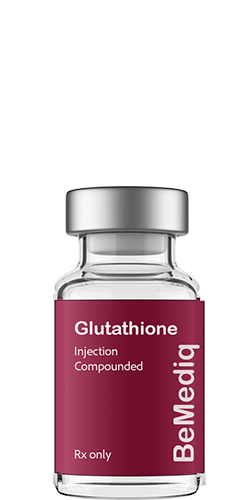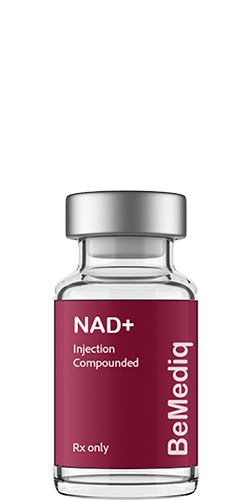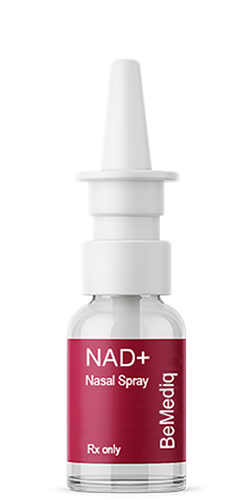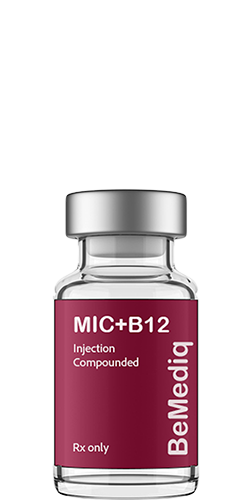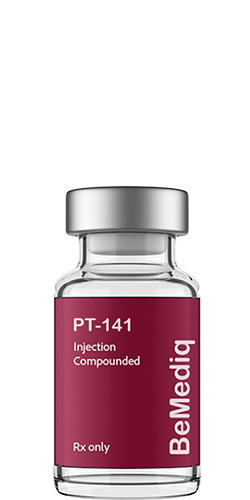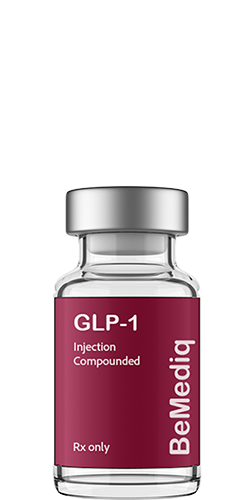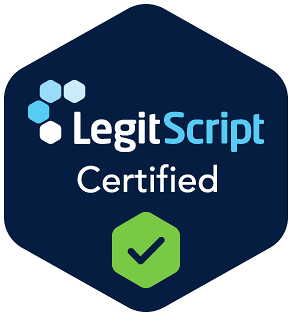From NAD+ injections to oral precursors, here’s how delivery method makes or breaks your results.

The Molecule Everyone’s Talking About
Feel Younger. Think Sharper. Live Longer.
That’s the promise. NAD+- the so-called miracle molecule.
Touted as the secret to sharper thinking, longer life, and more energy than your 25-year-old self ever had.
The modern-day fountain of youth.
NAD⁺ is no longer an insider secret- it’s the headline act in longevity circles.
And if you're reading this, you've probably already made the decision:
You want to support your NAD+ levels.
But now comes the harder part - figuring out how.
Should you book that IV drip? Try subcutaneous injections? Reach for NR capsules or NMN powder?
What about sprays, patches, or pharmacy creams?
The market is overflowing with options - but not all are created equal.
Suddenly, the hype becomes harder to navigate than the science.
Because here’s the truth most glossy wellness ads skip:
How you supplement NAD+ matters just as much as what you take.
Not every form reaches your cells - let alone your mitochondria.
And not every vial or capsule is certified, pharmacy-grade, or backed by independent testing.
This article breaks it down.
- What the research really says
- What functional doctors and longevity clinics are seeing in practice
- And how to choose a delivery method that fits your biology, your goals - and your life
Let’s begin with the promise - and what it actually takes to deliver it.
NAD+: More Than Just a Health Trend
Let’s get one thing clear: NAD+ (nicotinamide adenine dinucleotide) isn’t just another trendy supplement.
It’s a molecule that exists in every single cell of your body - and without it, life, quite literally, doesn’t happen.
Here’s what it supports behind the scenes:
- Mitochondrialenergy production - it helps turn food into usable cellular fuel [1]
- DNA repair - essential for healthy aging and cancer protection [2]
- Sirtuin activation - linked to longevity, inflammation control, and metabolic regulation [3]
- Neurotransmitterbalance - influencing mood, memory, and cognition [4]
- Hormonal signaling - particularly important during life stages like perimenopause [5]
The catch? Your NAD+ levels don’t stay steady. They decline - rapidly - as you age. By your mid-30s, research suggests that NAD+ levels may decline to approximately half of youthful levels. By your 60s, they may drop to around one-third. [6]
So the question arises: If NAD+ is that essential - why not simply supplement it?
Why Delivery Method Changes Everything
Sounds logical. But here’s the second catch: Oral NAD+ supplementation is generally considered less effective, as the molecule is too large - and too unstable - to survive your digestive tract intact. [7] Most of it gets broken down in your stomach or liver long before it reaches your bloodstream, let alone your cells.
That’s why delivery matters. Not all methods are created equal. It’s not about taking more - it’s about taking what your cells can actually use.
And this is where the real debate begins. IVs. Injections. Capsules. Nasal sprays. Sublingual drops. Creams. Patches. Each promises results. Some deliver. Some don’t.
Let’s break it down -not from a marketing perspective, but through the lens of clinical research, biochemistry, and practical outcomes.
Pharmacy-Grade NAD+ vs. OTC: The Big Divide
Before we dive into delivery methods, let’s clear up a common misconception – and it changes everything:
Not all NAD+ products are the same - and not all are even regulated.
There are two very different categories on the market today: certified, pharmacy-grade NAD+ therapies and over-the-counter NAD+ Supplements.
1. Certified, Pharmacy-Grade NAD+ Therapies
Pharmacy-grade NAD+ is compounded in licensed pharmacies, typically injectable or IV-grade, and requires a doctor’s prescription or telehealth evaluation. These products are sterile, traceable, and manufactured under strict safety and purity standards. They include:
- Subcutaneous injections
- IV infusions
- Transdermal patches
- Nasal sprays
- Topical creams
These formulations are prepared to meet clinical standards - meaning the dosage, sterility, and stability are tightly controlled. Some are even combined with supportive nutrients (like methyl donors or amino acids) for enhanced effect.
Unlike OTC supplements, certified, pharmacy-grade NAD+ formulations are not mass-produced; they’re custom-compounded for therapeutic use.
2. Over-the-Counter NAD+ Supplements
By contrast, most over-the-counter NAD+ products - including capsules, sublingual sprays, NMN, and NR supplements - are not pharmacy-certified. They are classified as dietary supplements. That means:
- They are not regulated to the same potency or bioavailability standards as prescription or pharmacy-compounded therapies
- Many contain fillers, additives, or low-grade precursors
- Some studies show they barely raise NAD+ in plasma - let alone inside cells
Even promising compounds like NMN and NR generally fall into this less-regulated category. Although research shows potential benefits, there’s no guarantee that the supplement in your bottle matches the molecule used in the clinical trials - or that it even reaches your bloodstream.
What most people don’t realize is that there’s a significant difference between clinical-grade injectable NAD+ and a standard retail supplement.

Conclusion: Choosing the Right NAD+ for Real Results
Pharmacy-grade NAD+ is backed by standards. Most OTC options aren’t held to the same potency or bioavailability standards. If it’s not tested, appropriately regulated, or bioavailable - it’ may not be worth your biology.
This article focuses exclusively on pharmacy-grade NAD+ delivery methods - such as injections, IVs, compounded nasal sprays, and transdermal therapies. These are the methods used in clinical settings and longevity practices.
We do not evaluate OTC supplements like NR, NMN, or capsule-based NAD+ products here. While those compounds are being studied - and may hold promise - they fall outside the scope of this comparison, primarily because:
- They’re not standardized to pharmacy-grade specifications or overseen in the same way as prescription products;
- Their bioavailability can vary widely depending on formulation and manufacturing;
- Many are marketed without consistent evidence of target‑tissue delivery.
Let’s Talk Real Options: How NAD+ Is Actually Delivered
When you strip away the glossy marketing and influencer testimonials, here’s what remains:
NAD⁺ is real.
NAD⁺ decline is real.
And replenishing it? That’s where things get nuanced.
Let’s walk through what we actually know — from clinical studies to expert voices — and what remains unclear.
A. IV NAD+ Therapy - The Intensive Option
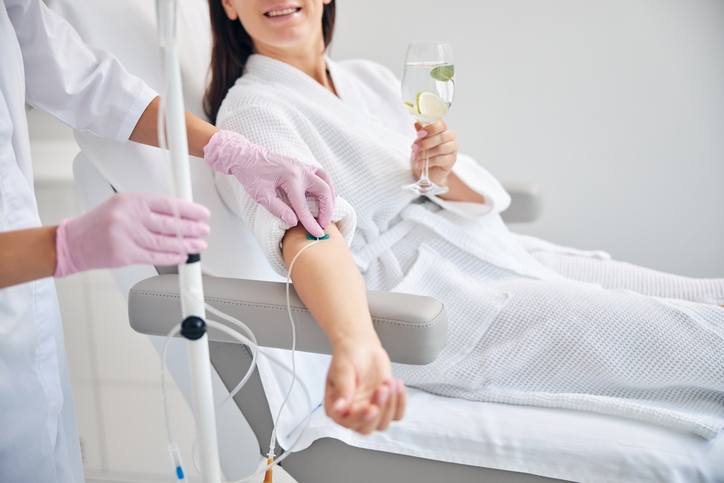
IV therapy is where the NAD+ trend began - and where the early research is strongest. A slow, steady infusion of NAD+ directly into the bloodstream over 1–3 hours can significantly elevate circulating levels. But what does that actually mean?
A pilot study by Grantet al. (2019) investigated the effects of a 6-hour NAD+ infusion (3 μmol/min) in healthy adults. The results were surprising: The body clears NAD+ from the bloodstream extremely quickly - indicating either rapid tissue uptake or degradation. However, this also means that elevated plasma NAD+ levels alone do not guarantee long-term replenishment of intracellular NAD+ stores. The full cellular impact remains underi nvestigation. [8]
In addiction clinics, IV NAD+ is sometimes used to support detoxification protocols - particularly for alcohol and opioid recovery - helping alleviate fatigue and improve cognitive clarity, though most of these outcomes are based on case reports rather than large-scale trials.
Moreover, there are currently no large, randomized, placebo-controlled clinical trials evaluating the long-term safety, efficacy, or systemic benefits of routine IV NAD+ use in healthy individuals.
In other words: promising but not yet fully established especially for routine use in healthy individuals.
Best for: Short-term recovery (e.g. post-viral fatigue, burnout, detox), or clinical settings under professional medical supervision - not a sustainable long-term solution for most individuals.
B. Subcutaneous NAD+ Injections: Steady, Effective, Practical

Of all available delivery methods, subcutaneous (subQ) NAD+ injections strike the best balance between efficacy, convenience, and sustainability.
Unlike IV drips, they offer a gentler experience with no need for clinical appointments. The injections bypass the gut, deliver NAD+ directly into tissue, and — when prescribed by a certified telehealth provider — can be administered safely at home.
While large-scale, placebo-controlled studies are still limited, many longevity clinics and telemedicine practices report consistent improvements in:
- Energy levels
- Sleep quality
- Mental clarity and focus
- Moodstability — especially in midlife adults or those experiencing burnout symptoms
In clinical practice, most effects are observed after 2–4 weeks of regular use, with notable improvements by week 8 to 12 in compliant patients.
Clinical Experience:
These outcomes are based on observational data from regenerative and functional medicine providers in everyday clinical practice — not formal clinical trials. Still, the growing body of observational evidence and patient feedback suggests that subcutaneous NAD+ injections may offer a sustainable, potentially effective alternative to more invasive methods like IV therapy.
Best for:
- Individuals seeking long-term NAD+ support without the time, cost, or invasiveness of IV drips
- Adults experiencing midlife fatigue, cognitive dullness, or hormonal transitions such as perimenopause
- Those interested in mitochondrial or neurological optimization in a manageable, routine-friendly format
Note: While early clinical experience is promising, this route is still considered off-label and experimental. Patients should consult with experienced providers and ensure they are using pharmacy-compounded, certified formulations.
E. NAD+ Nasal Sprays: Fast-Acting Clarity — In Your Pocket
Imagine needing a cognitive reset before a presentation, a long-haul flight, or a mentally taxing day. You reach for a small, pharmacy-grade spray bottle - a few pumps, a deep inhale - and within minutes, the fog begins to lift. Focus returns. You feel back in control.
That’s the idea behind NAD+ nasal sprays: delivering cellular fuel and neurological support exactly when - and where - you need it most.
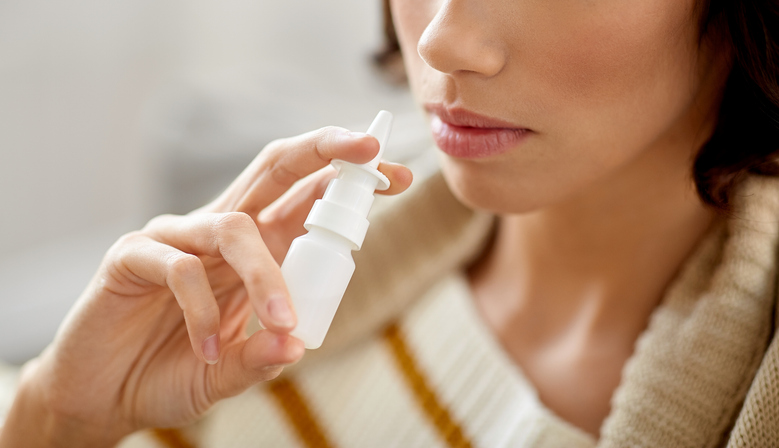
Why NAD+ nasal delivery?
The nose offers a unique biological shortcut. It bypasses digestion and the liver's first-pass metabolism, allowing active compounds to enter the blood stream - and potentially the brain - more directly. This route is already well-established in clinical pharmacology: intranasal drug delivery has proven effective for molecules like ketamine (for depression), oxytocin (for emotional regulation), and sumatriptan (for migraines).
Scientific reviews highlight this potential. Illum (2000), for example, notes that the olfactory region can enable direct drug transport to the brain, bypassing the blood–brain barrier in certain cases. [9]. Similarly, Dhuria et al.(2010) emphasize that nasal delivery can achieve CNS-level effects with reduced systemic exposure - especially with proper formulation and dosing [10].
What we know about NAD+ delivery?
Although there are no large-scale clinical trials on NAD+ nasal sprays yet, preclinical research suggests that NAD+ may follow similar uptake pathways. One rodent study found evidence of central nervous system penetration after intranasal administration of NAD+ [11]. Human data is still limited, but emerging protocols in functional and longevity clinics report subjective improvements in focus, clarity, and cognitive resilience - especially within 15–30 minutes of use.
“In our patients, NAD+ nasal spray is often the go-to before flights, high-stressmeetings, or during burnout recovery,” notes one functional MD. “It’s portable, fast, and surprisingly effective - especially when part of a broader mitochondrial support protocol.”
Of course, absorption can vary - depending on mucosal hydration, spray angle, and formulation. But unlike many over-the-counter sprays, pharmacy-compounded products are sterile, precisely dosed, and made under stringent quality standards.
Bottom Line:
Pharmacy-grade NAD+ nasal sprays may not replace deeper replenishment strategies like NAD+ injections - but they offer a flexible, fast-acting tool for anyone needing mental clarity on the go. Especially when sourced from certified providers and used mindfully, they can be a smart adjunct in modern NAD+ protocols.
F. Creams & Patches - Skin‑Deep Support?
Let’s be real: the idea of bypassing the gut or injections by simply applying a patch or cream is undeniably appealing. That's exactly what pharmacy-compounded NAD+ creams or patches aim to do — offer a gentle, non-invasive route for supplementation.

Why NAD+ Creams and Patches might work:
Transdermal systems are well-established in therapeutic contexts — think nicotine, menopausal hormones, or fentanyl for pain. These deliver steady, controlled doses while avoiding gastrointestinal degradation and first‑pass metabolism [12]
What the science tells us about general transdermal principles:
A well-known 1985 crossover study demonstrated that transdermal estradiol delivers more physiologically steady hormone levels compared to oral administration - supporting the overall concept of skin-based delivery effectiveness. [13]
However, transdermal absorption is influenced by many variables - including skin thickness, the application site, and skin metabolism. A comprehensive review by Barry (2001) explains how innovations like lipid vesicles (such as liposomes), micro needles, or electric enhancement technologies can help overcome the skin’s natural barrier and enable more effective drug delivery. [14]
What does this mean for NAD+:
- Theoretically, a cream or patch could deliver NAD+ steadily over time.
- Innovative delivery systems could make NAD+ patches more effective - but right now, the evidence is still catching up.
Feedback from clinical practice:
Clinics offering pharmacy-grade NAD+ cream or patches often observe subtle improvements in energy or clarity after consistent use over several weeks.
Best for:
Those who love the idea of low-effort, no-needle solutions. If you’re curious about NAD+ but not ready for injections or IVs, a pharmacy-grade patch or cream might be a gentle first step. It won’t replace deeper interventions - but for some, it’s an easy way to begin the journey.
Bottom Line: What NAD+ Products Work - and for Whom?
If you're already committed to supporting your levels, delivery makes all the difference. Not every form gets where it needs to go. Not every supplement is tested. And not every “booster” has demonstrated benefits beyond placebo in current research.
What we know:
- Subcutaneous injections strike the best balance - effective, sustainable, and easy to integrate into daily life.
- IV drips may be helpful in acute or clinical settings, but they’re not practical for long-term use.
- Nasal sprays and transdermal patches / creams show promise - especially when pharmacy-compounded - but remain experimental for now.
- Over-the-counter capsules, powders, or unregulated sprays? Often inconsistent, unverified, and rarely deliver on their claims.
Your best bet?
Start with pharmacy-grade, certified options - and match the delivery method to your needs.
Not for hype. Not for the label.
But for what your body can truly absorb, use, and benefit from.
Because when it comes to NAD+, it’s not about doing more - it’s about doing what actually works.
Your Next Step Toward Lasting Energy
You deserve energy that lasts, focus that doesn’t fade, and a biology that works with you - not against you. At BeMediq, we believe NAD+ therapy should be safe, science-backed, clinician-guided and designed around your life. If you’re ready to explore physician-guided NAD+ injections you can use at home - with no upsells, no pressure, and complete transparency - we’re here to guide you every step of the way.
Disclaimer: These statements are for informational purposes only and have not been evaluated by the Food and Drug Administration. This content is not intended to diagnose,treat, cure, or prevent any disease. Always consult a licensed healthcare provider before starting any supplement or therapy.

Written by Elena Brull, FNR, Functional Nutrition Researcher & Women’s Health Journalist
About the Author
Elena Brull, FNR, is a Functional Nutrition Researcher and Women’s Health Journalist specializing in integrative approaches to hormonal balance, nutrition, and longevity. Her work combines evidence-based insights with holistic health principles to help women understand their biology and live in rhythm with it. She writes from a non-clinical, educational perspective — with the intention to inform and empower, not to diagnose or prescribe.
Frequently Asked Questions About Pharmacy-Grade NAD+
1. What exactly does “pharmacy-grade” mean for NAD⁺?
When we say “pharmacy-grade,” we’re talking about NAD⁺ that has been prepared in a licensed compounding pharmacy, following strict handling and quality-control steps. Each batch is not just produced, but also tested for purity, potency, and stability before it’s ever used. In practice, this often means you’re getting a product with a predictable dose and reliable absorption. That level of consistency is difficult to achieve with most over-the-counter NAD⁺ capsules or powders, which can differ in strength, ingredient makeup, and how effectively your body is able to use them. In most cases, pharmacy-grade NAD⁺ is used in medical or longevity practices and given under a clinician’s supervision.
2. How may NAD⁺ help maintain energy and cell function?
Scientists have been looking at NAD⁺ for years because of its role in powering the mitochondria—the parts of our cells that produce energy. NAD+ also helps with DNA repair and supports communication between cells. Together, these functions can influence how energetic we feel, how well we recover, and even aspects of cognitive clarity. While NAD⁺ naturally declines as we age, certain lifestyle habits, the proper nutrients, and targeted delivery methods may help keep levels in a healthier range.
3. Is NAD⁺ therapy beneficial for women over 35?
NAD⁺ therapy can be a good option—provided it’s done in the right setting. When it’s prescribed by a qualified healthcare provider and prepared by a regulated pharmacy, most people tolerate it well. Still, it’s not a blanket solution. Your own health background, current treatments, and what you’re hoping to achieve all matter when deciding if it’s a fit.
4. Can NAD⁺ support women in perimenopause?
Perimenopause is often a time when the body starts playing by new rules—energy isn’t as steady, moods can shift without warning, and the metabolism may slow down in ways you’ve never noticed before. NAD⁺ isn’t a hormone, but it’s part of the engine that keeps your cells running, helping mitochondria produce energy and supporting specific signals that interact with hormonal systems. That’s why some practitioners see it as a helpful piece of the puzzle. When it’s combined with the right lifestyle choices and guidance from a healthcare provider, NAD⁺ support can be tailored to help you feel more balanced through the changes.
5. How soon will I start to feel a difference with NAD⁺ support?
It really varies from person to person. If your NAD⁺ levels are already low, you might notice a lift in energy or mental clarity quite quickly - sometimes within just a few days, especially with injections or IV therapy. Others experience a slower shift, with benefits building gradually over the course of several weeks. Either way, most practitioners recommend pairing NAD⁺ therapy with good sleep, balanced nutrition, and movement - because those habits help your cells use NAD⁺ more effectively.
6. Is NAD⁺ the same as NMN or NR?
Not exactly. NMN (nicotinamide mononucleotide) and NR (nicotinamide riboside) are precursors—your body converts them into NAD⁺. Think of it like baking: NMN and NR are ingredients, but NAD⁺ is the finished cake your cells actually use. The catch? How efficiently your body makes that conversion can vary from person to person, and from product to product. That’s why some people skip the precursors and go straight to regulated NAD⁺ delivery methods.
7. Do I need a prescription for NAD⁺ therapy?
In many cases, yes - especially for pharmacy-grade injections, IVs, or compounded nasal sprays. These forms are usually prepared in licensed pharmacies and given under the guidance of a healthcare provider. That’s part of what ensures you’re getting the right dose, in a form your body can actually absorb.
8. Why can’t I just buy NMN on Amazon?
If you’re in the U.S., you may have noticed NMN has quietly disappeared from Amazon’s shelves. That’s because the FDA is currently reviewing NMN as a potential drug ingredient, which means it can’t legally be sold as a dietary supplement in the U.S. anymore. In other countries, you might still find it online—but quality can be hit or miss. Some products don’t contain as much NMN as the label claims, or they lose potency if stored incorrectly. That’s why many wellness practitioners prefer regulated, pharmacy-grade NAD⁺ options, where purity, stability, and absorption are actually tested.
9. What about liposomal NMN — is it a safe alternative?
Liposomal NMN encapsulates the molecule in tiny, fat-like bubbles to help it survive digestion, and some lab data suggest it may be absorbed better than standard capsules. In the U.S., NMN is now in a regulatory gray zone—no longer allowed as a dietary supplement—so products are often sold as “for research use,” without the oversight pharmacy-grade NAD⁺ receives. Short-term studies suggest that NMN is generally well-tolerated, but long-term safety data are still limited. For predictable dosing and regulated quality, most practitioners prefer pharmacy-grade NAD⁺ delivery methods.
10. What’s the difference between pharmacy-grade NAD⁺ and NMN you can buy online?
Think of pharmacy-grade NAD⁺ as something prepared like a custom recipe in a certified kitchen—made in a regulated pharmacy, prescribed by a doctor, and given with your health history in mind. NMN sold online lives in a regulatory “gray zone.” It’s not approved as a drug or dietary supplement, doesn’t have to meet strict quality standards, and is often labeled “for research use only” to avoid rules. In other words, one comes with built-in safeguards, the other relies entirely on the seller’s word.
References
[1] Ying W. NAD+ and NADH in brain functions, brain diseases, and brain aging. Frontiers in Bioscience. 2007; 12:1863–1888. DOI: 10.2741/2194; PMID: 17127427. https://pubmed.ncbi.nlm.nih.gov/17127427
[2] Bai P. Biology ofpoly (ADP-ribose) polymerases: the factotums of cell maintenance. MolecularCell. 2015;58(6):947–958. https://www.cell.com/molecular-cell/fulltext/S1097-2765(15)00057-X?_returnURL=https%3A%2F%2Flinkinghub.elsevier.com%2Fretrieve%2Fpii%2FS109727651500057X%3Fshowall%3Dtrue
[3] Imai S, GuarenteL. NAD+ and sirtuins in aging and disease. Trends Cell Biology, 2014; 24(8):464–471. https://www.cell.com/trends/cell-biology/abstract/S0962-8924(14)00063-4?_returnURL=https%3A%2F%2Flinkinghub.elsevier.com%2Fretrieve%2Fpii%2FS0962892414000634%3Fshowall%3Dtrue
[4] Lautrup S, et al. NAD+ in Brain Aging and Neurodegenerative Disorders. Cell Metab.2019;30(4):630–655. PMCID: PMC6787556; PMID: 31577933. https://www.cell.com/cell-metabolism/fulltext/S1550-4131(19)30502-9?_returnURL=https%3A%2F%2Flinkinghub.elsevier.com%2Fretrieve%2Fpii%2FS1550413119305029%3Fshowall%3Dtrue
[5] Verdin E. NAD+ in aging, metabolism, and neurodegeneration. Science. 2015;350(6265):1208–1213. https://www.cell.com/cell-metabolism/fulltext/S1550-4131(19)30502-9?_returnURL=https%3A%2F%2Flinkinghub.elsevier.com%2Fretrieve%2Fpii%2FS1550413119305029%3Fshowall%3Dtrue
[6] Massudi H et al. Age-associated changes in oxidative stress and NAD⁺metabolism in human tissue. PLoS One. 2012;7(7):e42357. https://journals.plos.org/plosone/article?id=10.1371/journal.pone.0042357.
[7] Trammell SA, et al. NAD⁺ metabolism and therapies. Cell Metab. 2017; 27(3):529–547.
[8] Grant, R., Berg,J., Mestayer, R., et al. (2019). NAD⁺ Infusion Therapy: Pilot Study in HealthyAdults. Open Access Journal of Translational Medicine and Research. https://pubmed.ncbi.nlm.nih.gov/31572171
[9] Illum, L. (2000).Transport of drugs from the nasal cavity to the central nervous system.European Journal of Pharmaceutical Sciences, 11(1), 1–18. https://doi.org/10.1016/S0928-0987(00)00087-7
[10] Dhuria, S. V.,Hanson, L. R., & Frey, W. H. (2010). Intranasal delivery to the centralnervous system: mechanisms and experimental considerations. CNS Drugs, 24(9),629–636. https://pubmed.ncbi.nlm.nih.gov/19877171
[11] Pardridge, W. M.(2003). Drug and gene targeting to the brain with molecular Trojan horses. Nature Reviews Drug Discovery, 2(6), 471–482 https://pubmed.ncbi.nlm.nih.gov/12120094/
[12] Prausnitz, M. R., &Langer, R. (2008). Transdermaldrug delivery. Nature Biotechnology, 26(11), 1261–1268. https://doi.org/10.1038/nbt.1504
[13] Powers MS,Schenkel L, Darley PE, Good WR, Balestra JC, Place VA. (1985). Pharmacokineticsand pharmacodynamics of transdermal dosage forms of 17-beta estradiol:comparison with conventional oral estrogens used for hormone replacement.
American Journal of Obstetrics and Gynecology, 152(8), 1099–1106. https://www.ajog.org/article/0002-9378(85)90569-1/abstract
[14] Barry, B. W.(2001). Novel mechanisms and devices to enable successful transdermal drug delivery. European Journal of Pharmaceutical Sciences, 14(2), 101–114. https://www.sciencedirect.com/science/article/abs/pii/S0928098701001671

